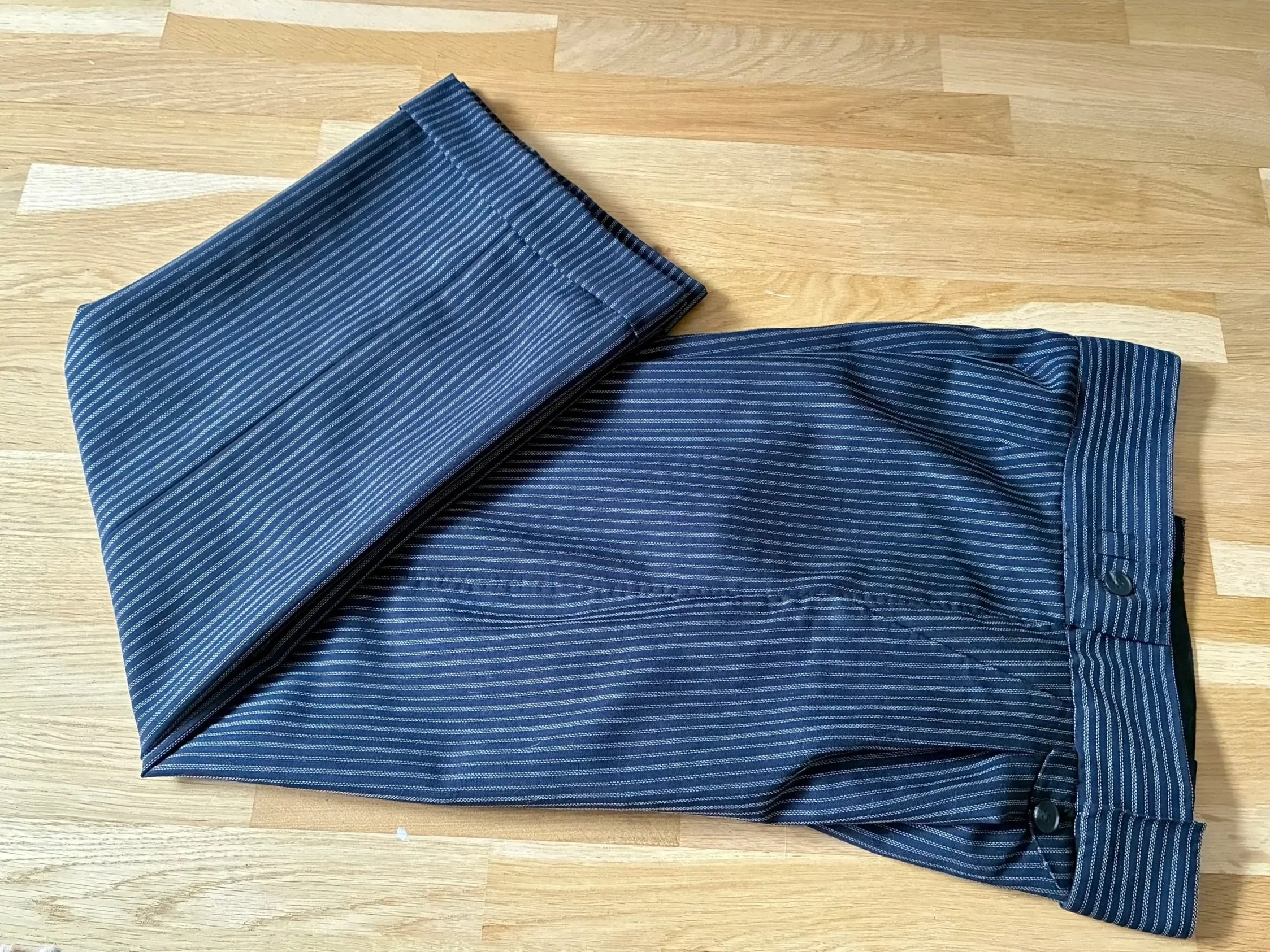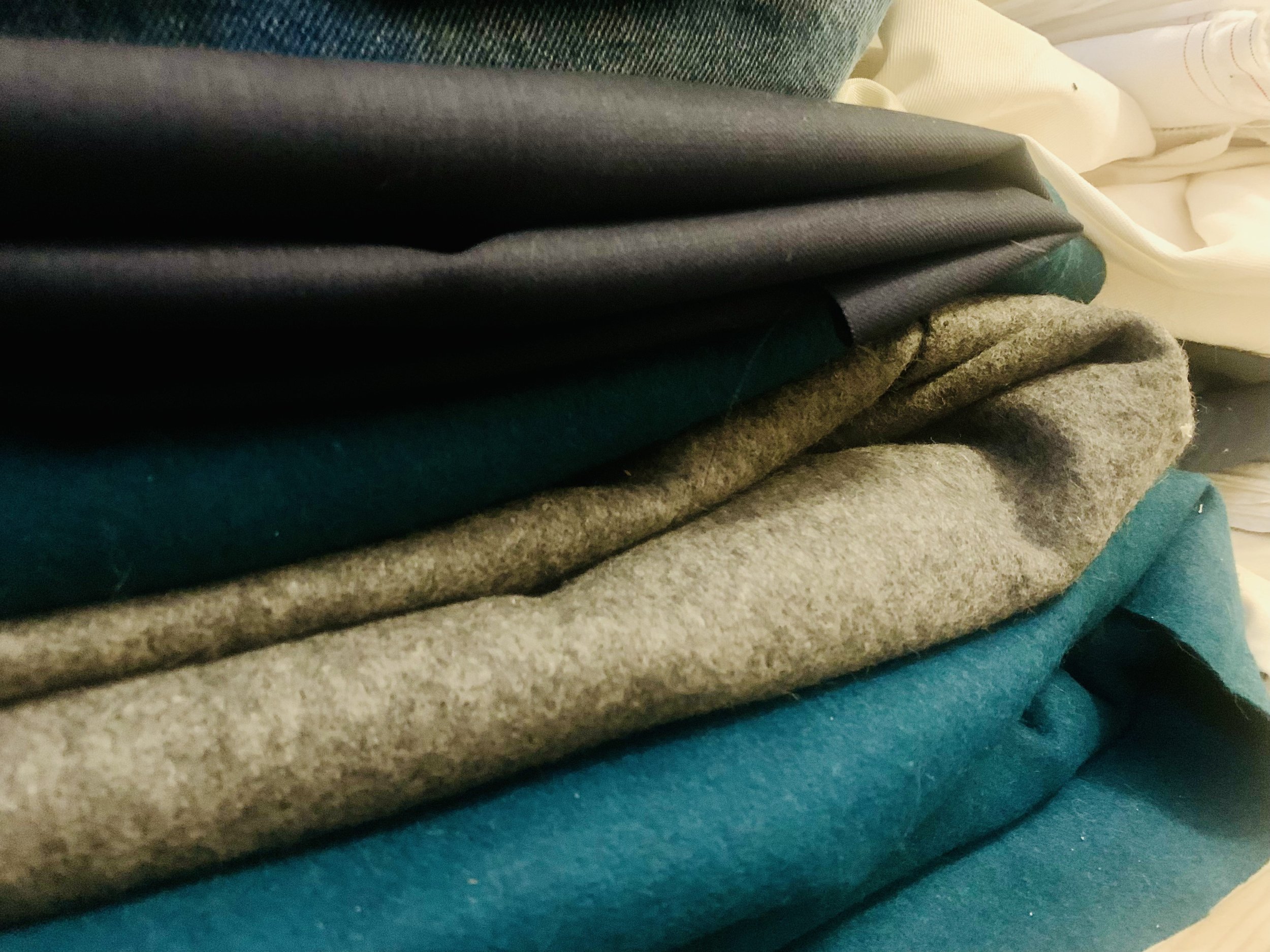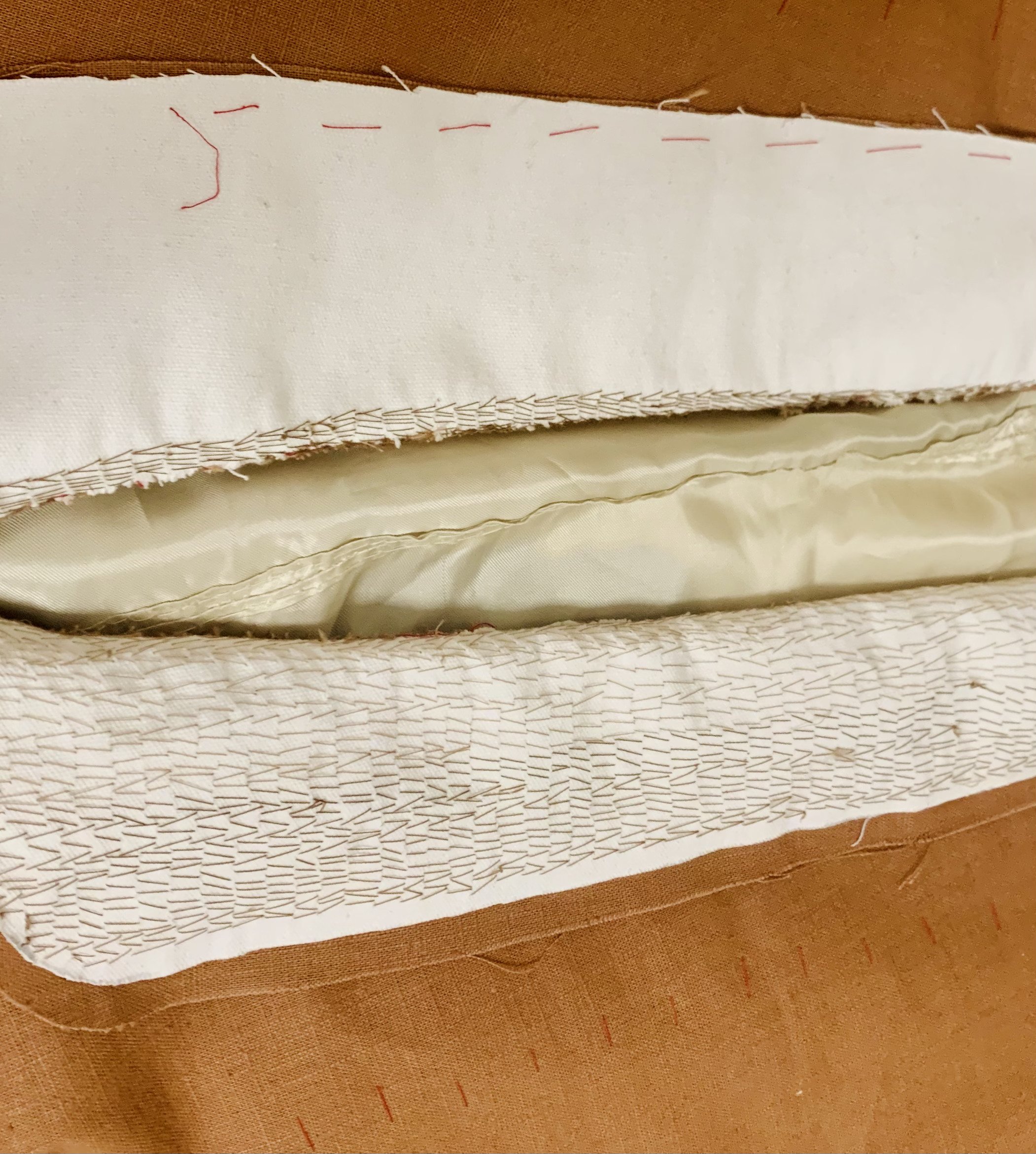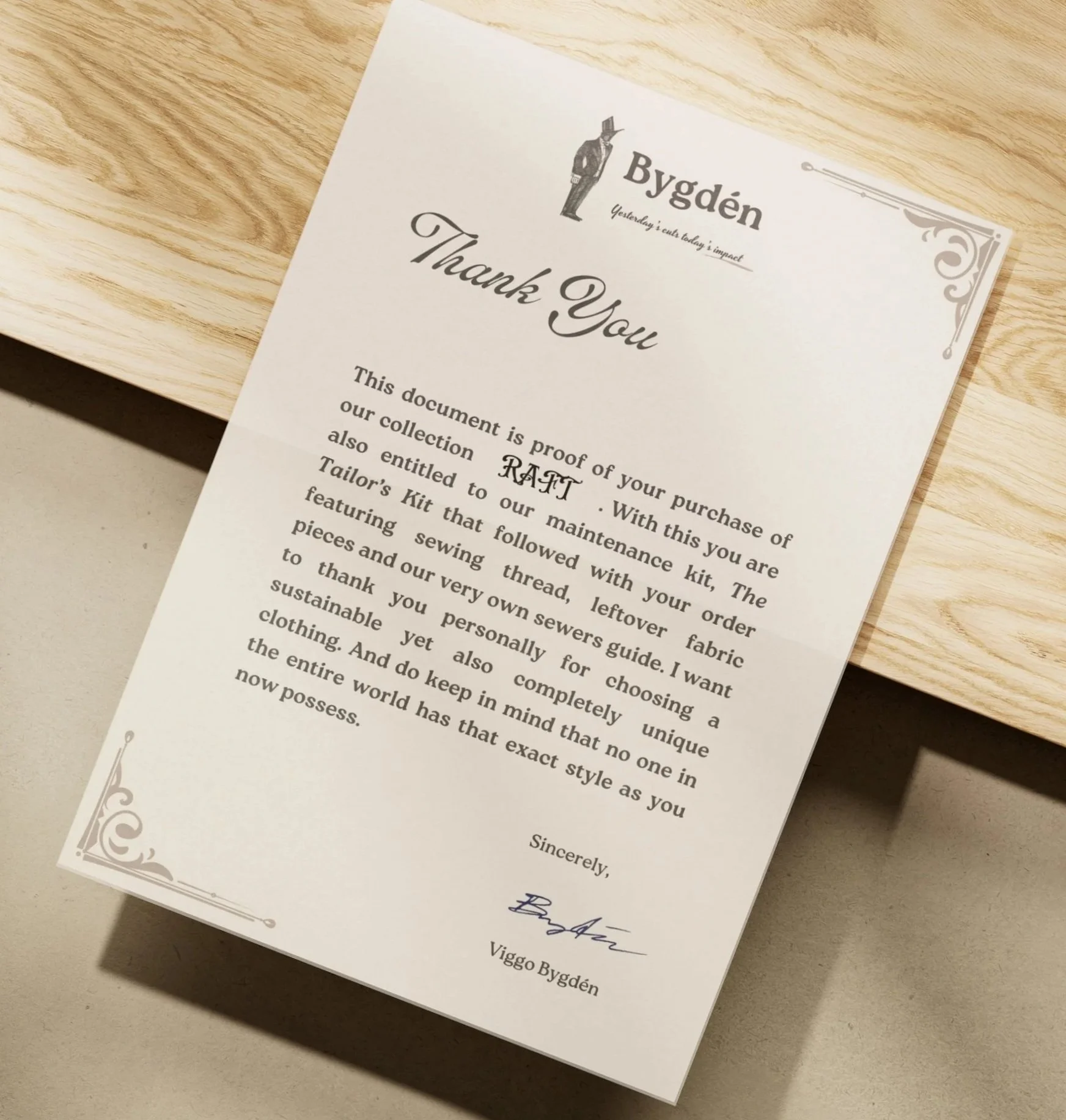
Designing Yesteryear Today
Born in the city of Västerås, Sweden, which during the 1800s was home to various industries and a more formal way of dress, I have always felt inspired by the traditions of craftsmanship and tailoring that once defined everyday life. My sewing journey began when I realized that much of today’s clothing is designed to last only a few wears and often fits poorly. This interest in older forms of dress and more sustainable, well-made garments set me on the path toward designing and creating my own clothing.
The process has been far from perfect. The first pieces I made were ill-fitting, expensive to produce, and required far more time than they should have. Over time, through patience and repetition, I began to refine my techniques and develop a deeper understanding of both construction and design.
An important part of the garments I create lies in the attention to detail. I often include small, personal touches such as embroidered names or hand-sewn buttonholes, in order to make each piece unique. The extra time and care put into every stitch make these garments more meaningful and considered qualities that are often missing in modern clothing.
I began sewing around the age of fifteen and have learned my craft through the generosity of others who shared their knowledge on the Internet. In that sense, I am self-taught in the traditional way. Before sewing, I studied technology, driven by an interest in mathematics and physics, but I eventually found greater satisfaction in combining theoretical thinking with the creativity of garment making. Working in an office environment has also deepened my appreciation for formal styles and inspired me to explore them further in my own work.
I sew because I want to create clothing that is sustainable, long-lasting, and thoughtfully made. Each piece carries small, hidden details that may not be noticed at first glance but add to its character and craftsmanship. In a world where clothing is increasingly mass-produced and standardized, I find meaning in slowing down, sewing by hand, and creating something personal and enduring.
Our Process
Inspiration
M ost of the inspiration comes from the golden age of men's wear, late 19th to early 20th century. Mainly sourced from old images, photos and of course old garments.
Tools
A ll of our tools are either gathered from second-hand locations or from modern sewing stores in Sweden.
➤ Selfmade
➤ tyg.se
Fabric
T he fabrics sorted on all of the designs are gathered from second hand stores here in Sweden or from a fabric shop listed below.
Techniques
T he techniques are inspired by—and often borrowed from—the Golden Age of Men’s Wear, when every component of a garment was shaped and fitted using specialized stitching. Examples include shoulder pads, pad stitching, and darts.
E very garment begins with inspiration—most often drawn from the mythology of classic menswear such as George Raft, Frank Sinatra, and Clark Gable. There are garments that look even further back, drawn from silhouettes of the late 19th and early 20th centuries. Influences and era details for every collection are provided in detail on our website.
Thus we proceed into the pattern-cutting process wherein drawings are translated into hand-sketched patterns. A first prototype is put together to create fit, proportion, and drape—such that silhouette respects principles of traditional tailoring but meets modern comfort standards.
The garment finally takes life with precise menswear cutting practices such as hand pad-stitching, canvas cutting, and pressing—all stitching done with attention to detail that defines enduring craftsmanship.
Not an Ordinary Purchase
E ach order includes a certificate guaranteeing the authenticity of the collection you’ve purchased. This certificate is also signed as further proof of its legitimacy. Additionally, every order comes with a digital copy of our guide detailing how to repair any potential rips or tears in the fabric of your piece. Quality, sustainability, and uniqueness are at the heart of all our collections.
Make an Impact on Fashion
When it comes to fashion most of it is mass produced low qualitative pieces meant be worn once or twice. But it doesn’t have to be, join me in my vision for a more sustainable, qualitative and timeless fashion industry today.






